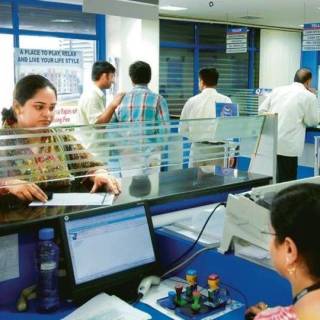India’s banking crisis, driven by high NPAs, has persisted for 6-7 years. During this time banks shifted to giving unsecured credit for personal loans, away from asset-backed secured lending. Many fear a bulk of these loans could be to subprime borrowers. Mint analyses the trend.
What is a subprime borrower?
A subprime borrower has a higher chance of defaulting on a loan. Typically, subprime borrowers have lower credit ratings and may have delinquencies in their credit record. A lower credit score does not automatically imply that a subprime borrower would be unable to source credit. At the same time, lower the credit score, higher the interest rate charged by the bank to accommodate for the default risk. Many suspect that the recent saturation of the credit card market combined with severe competition in consumer lending businesses has resulted in extension of significant credit to subprime borrowers.
Why are subprime borrowers preferred?
Even as corporate lending and mortgages are backed by a collateral, delay in securing those assets and recovering money through insolvency proceedings have led to risk aversion. Lenders are thus focusing on personal loans and credit cards as discretionary spending on clothes, ordering food, entertainment, travel and commuting rises. Developments in technology and the recent availability of data due to the integration of Aadhaar, PAN and bank accounts have lowered the costs of processing loans for banks. This has helped them lend small amounts as unsecured loans for personal consumption.
What has been the recent trend in credit extension?
A TransUnion CIBIL report for the June quarter showed that 32% of the credit cards were issued to subprime borrowers. This coincides with a sluggish extension of credit to industry at 2.3% in the September quarter, while lending to the farm sector grew 3.7% and personal loans rose 8.9%. Bankers are preferring to give personal loans and there is demand for the same.
Is there any link with the non-bank crisis?
While a major part of the NPA crisis may be behind us, fresh vulnerabilities have emerged due to a prolonged slowdown in the real estate sector. Non-banks were often the front runners in providing last-mile availability of credit and the recent liquidity crisis has provided an opportunity for banks to try and get a share of the personal loan space. This can have positive implications for the sector and the economy as it can deepen the financial services industry, thereby benefiting the financial system.
What does it mean for the future of banking?
While financial services and banking would continue to grow in India as per capita income rises, much of the next stage of growth would come from servicing last-mile consumers. It could even be in financing of smaller size, short- duration loans. The policies seem conducive for the securitization industry. While a clean-up of the banking system was necessary, stiff competition could lead to some banks taking unmanageable risks on their balance sheets.
Karan Bhasin is a Delhi-based policy researcher.
